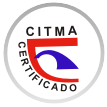Analysis of water quality and its temporal evolution in Guantánamo Bay, Cuba
Abstract
Translator
Guantánamo bay, located in Caimanera, province of Guantánamo, presents a significant deterioration in water quality; however, there is no evolutionary study that demonstrates the dynamics of the gradual deterioration of this ecosystem and its current state. In this research, physical-chemical and microbiological parameters indicative of water quality are evaluated, analyzing their temporal evolution. Sampling was carried out in the interior lobes (Cerro Guayabo and Joa), during the months of December 2022 and March 2023 (dry rainy period), at eight sampling points, seven of these reported in previous investigations, a new point is added considering the dynamics of the ecosystem. The results corroborate the deterioration of the ecosystem and water quality, obtaining values of nitrates, nitrite, ammonium, dissolved oxygen and BOD5 that correspond to water of poor and/or doubtful quality, with a water quality index (CCME WQI = 23) (low quality); The presence of cyanobacteria and dinoflagellate species with toxic potential is also identified. Pollution and associated risks constitute key management issues in this ecosystem, which is aggravated by the impact of climate change, associated with frequent drought events, strong winds and floods.
References
2. GACETA OFICIAL DE LA REPÚBLICA DE CUBA. Decreto Ley 77 “DE COSTAS” y legislación complementaria. 2023-915-O108. [en línea]. 2023. Disponible en: https://www.gacetaoficial.gob.cu/sites/default/files/goc-2023-o108_0.pdf
3. RODRÍGUEZ TITO J.C.; GÓMEZ LUNA L.M. Trophic status of twenty-four water reservoirs in the eastern of Cuba. Revista Cubana de Química. 2020; 32(1):136-53. [Consultado 25 octubre 2023]. e-ISSN: 2224-5421. Disponible en: http://scielo.sld.cu/scielo.php?script=sci_abstract&pid=S2224-54212020000100136&lng=es&nrm=iso&tlng=en
4. ISO/IEC 17025- US EPA. General requirements for the competence of testing and calibration laboratories. 2017. Disponible en: https://webstore.ansi.org/standards/iso/isoiec170252017
5. LUNA L.M.G.; PALANQUÉ A.Z.; OCHOA Z.C.C.; ARENCIBIA Y. Á.; ALONSO J.A.B.; MAZAR A. DE LAS M.B. Implementación de un protocolo de gestión de riesgo por presencia de ficotoxinas en la laguna de Baconao, Santiago de Cuba. Boletín de Investigaciones Marinas y Costeras. 2021; 50 (1):43-78. [Consultado 30 junio 2021]. e-ISSN 2590-4671. DOI: 10.25268/bimc.invemar.2021.50.1.980 Disponible en: http://boletin.invemar.org.co/ojs/index.php/boletin/article/view/980
6. DILLARD G.E. Common Freshwater Algae of the United States: An Illustrated Key to the Genera (excluding the Diatoms). [en línea]. 2, ilustrado. J. Cramer; 2008. 200 p. ISBN: 3443500331, 9783443500337. Disponible en: https://books.google.com.cu/books/about/Common_Freshwater_Algae_of_the_United_St.html?id=h01FAQAAIAAJ&redir_esc=y
7 FAUST M.A.; GULLEDGE R.A. Identifying harmful marine dinoflagellates. Washington, DC: Departamento de Botánica, Museo Nacional de Historia Natural. En Contribuciones del Herbario Nacional de los Estados Unidos [en línea]. 2002 [Consultado 2 febrero 2024]; Disponible en: http://repository.si.edu/xmlui/handle/10088/27121
8. GUIRY M.; GUIRY G.; MORRISON L.; RINDI F.; VALENZUELA S.; MATHIESON A.; y col. AlgaeBase: An On-line Resource for Algae. Cryptogamie Algologie. 2014; 35: 105-15. [Consultado 9 febrero 2024] ISSN: 0181-1568, 1776-0984. doi/10.7872/crya.35.iss2.2014.105. Disponible en: http://www.bioone.org/doi/abs/10.7872/crya.v35.iss2.2014.105
9. MATSUOKA K.; FUKUYO Y. Technical Guide for Modern Dinoflagellate Cyst Study. Westpac-hab, Jap Soc Prom Sci, Tokyo. 2000;72. [Consultado 2 febrero 2024] Disponible en: https://www.researchgate.net/publication/228587234_Technical_Guide_for_Modern_Dinoflagellate_Cyst_Study
10. US EPA O. National Recommended Water Quality Criteria - Aquatic Life Criteria Table [en línea]. 2015. Disponible en: https://www.epa.gov/wqc/national-recommended-water-quality-criteria-aquatic-life-criteria-table
11. ONN. NC 521: 2007 Vertimiento a Zona Costera [en línea]. 2007. Disponible en: https://studylib.es/doc/8336696/nc-521-vertimiento-a-zona-costera
12. ONN. NC 22: 1999 Requisitos higiénicos sanitarios en lugares de baño en costas y en masas de aguas interiores. Norma Cubana. Oficina Nacional de Normalización. Ciudad de La Habana. Cuba; 1999a.
13. ONEI. Caimanera en Cifras 2022. Edición 2023. [en línea]. [Consultado 25 octubre 2023]. Disponible en: https://www.onei.gob.cu/sites/default/files/publicaciones/2023-01/aem-2021-edicion-2022-caimanera.pdf
14. ONN. NC 25: 1999 Evaluación de los objetos hídricos de uso pesquero. Norma Cubana. Oficina Nacional de Normalización. Ciudad de La Habana; 1999b.
15. LOZA S.L.; SÁNCHEZ M.; MONTALVO J.F. Implicaciones del deterioro ambiental para los ecosistemas costeros. Estudio de caso: “Bahía de Guantánamo, Cuba”. Serie Oceanológica. 2016;(15):15. [Consultado 24 octubre 2023] ISSN 2072-800x. Disponible en: http://hdl.handle.net/1834/12932
16. GÓMEZ LUNA L.; ASÍN O.; ORTEGA Y. Primer reporte de Oxyrrhis marina DUJARDIN 1841 en la Bahía de Guantánamo, Cuba. Revista de Investigaciones Marinas [en línea]. 2014; 34(1):1-8. [Consultado 24 octubre 2023]. ISSN 1991-6086. Disponible en: https://revistas.uh.cu/rim/article/view/6328
This work is licensed under the Creative Commons Attribution-NonCommercial.
![]()













 Universidad de Oriente
Universidad de Oriente 